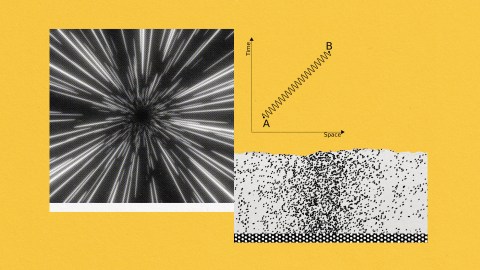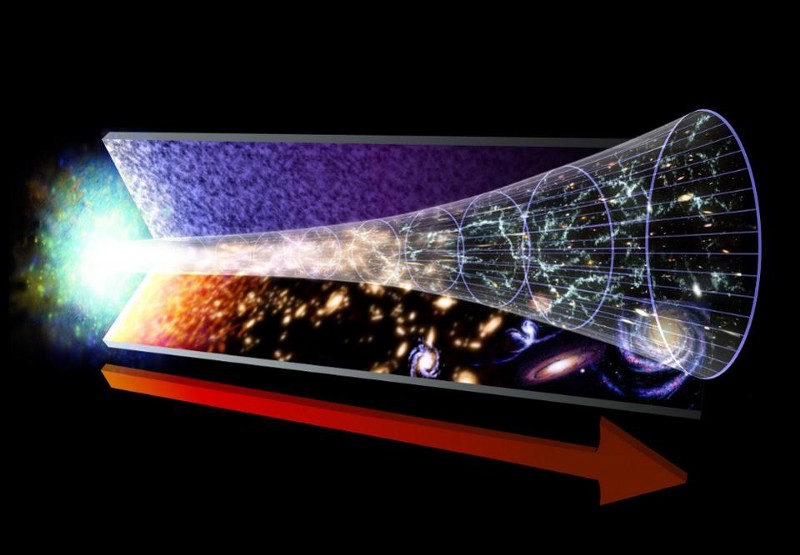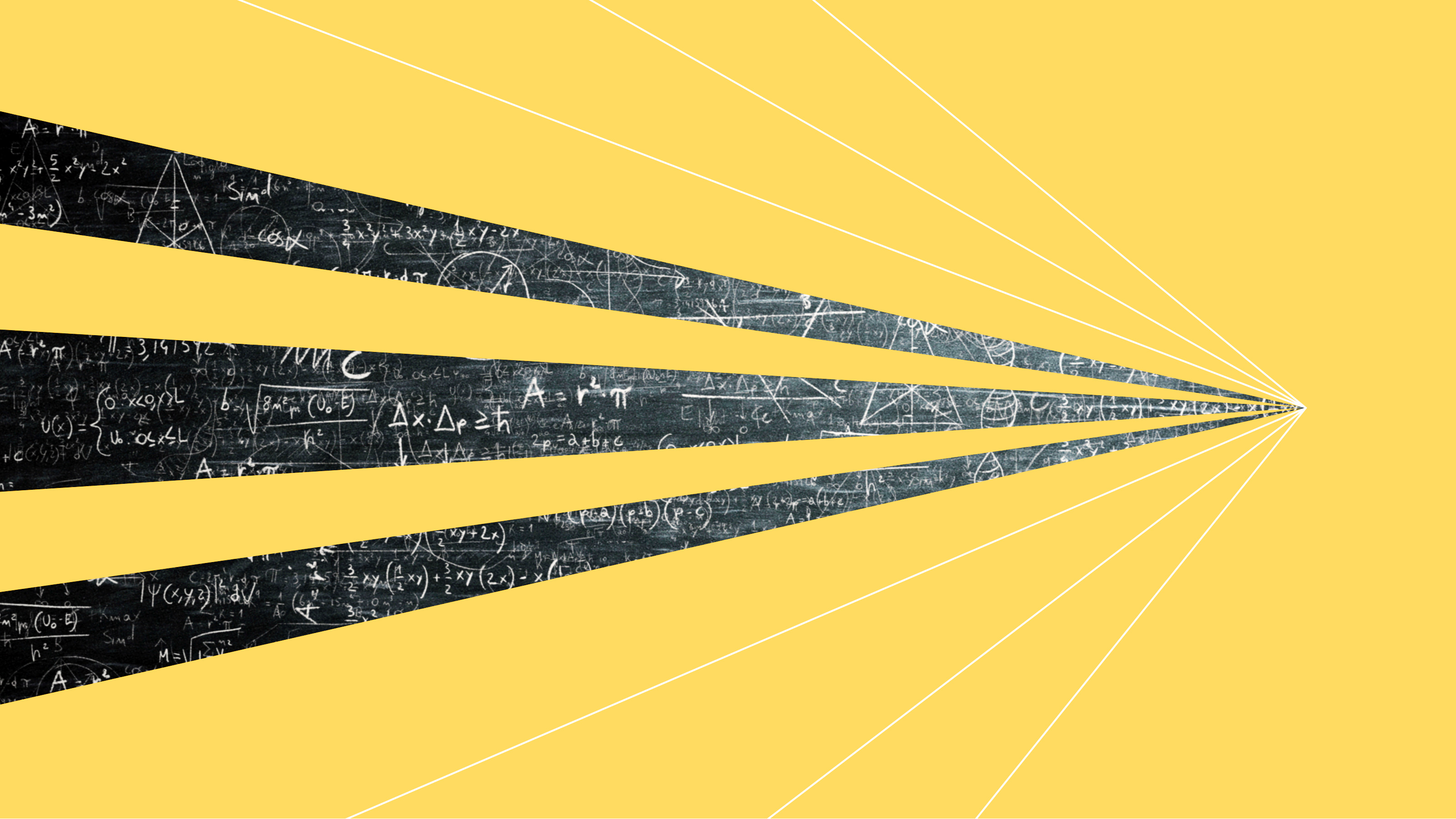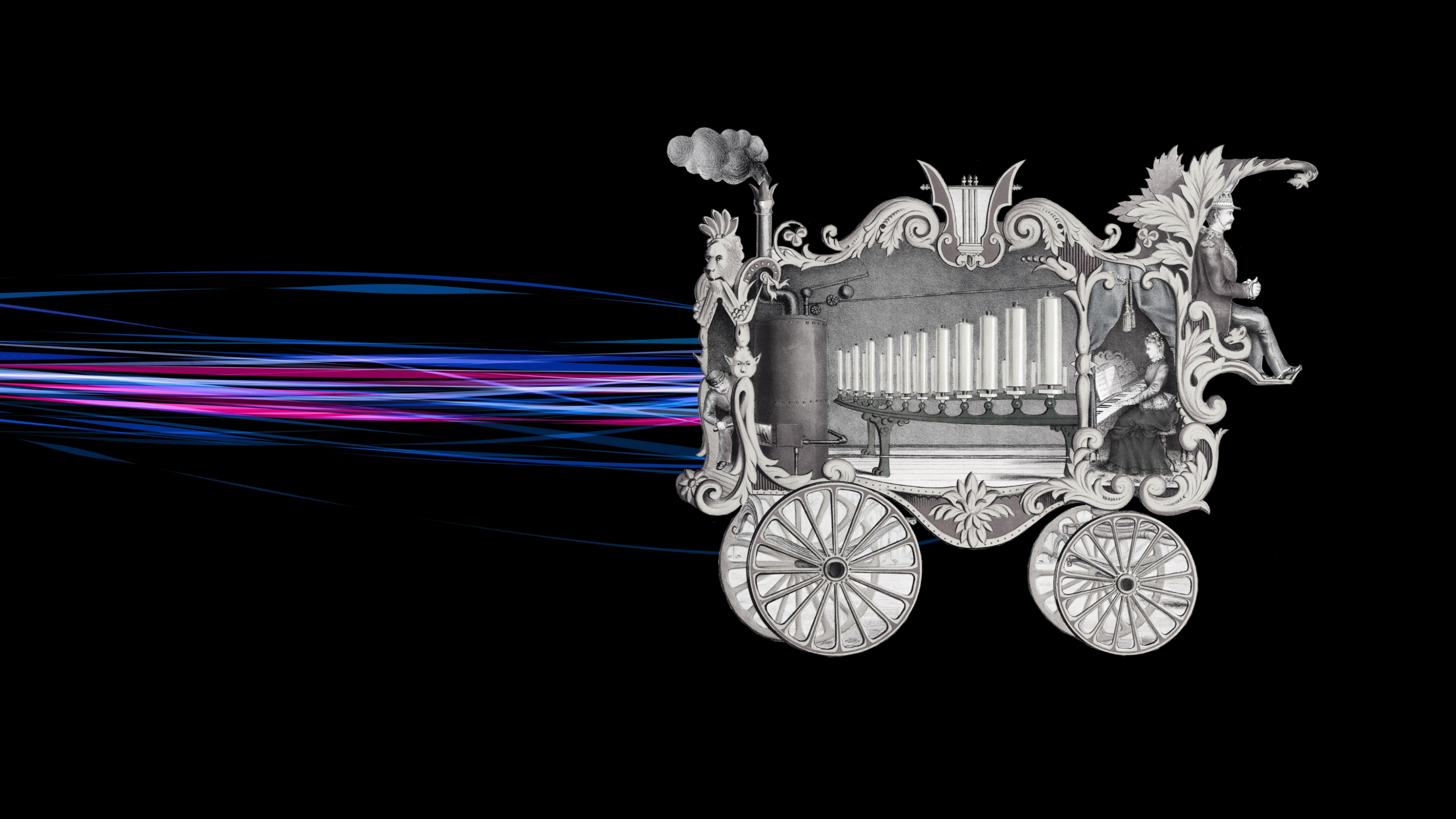What is it like to be a photon traveling at light speed?

- Einstein’s special relativity describes how as an object moves closer to the speed of light, time slows down and distances shrink.
- A photon, moving at the speed of light, would therefore perceive its journey as instantaneous, existing everywhere along its path at once.
- From a photon’s viewpoint, the Universe is timeless and dimensionless.
Among the scientifically savvy, there is an oft-repeated claim that says you cannot go faster than the speed of light. And this claim seems to be true: Despite heroic efforts, nobody has been able to exceed that limit of about 186,000 miles per second (300,000 km/s) — fast enough to circle the Earth 7.5 times in a single second.
For slower speeds — including up to 99.999999% the speed of light — we have a very good understanding of how matter moves thanks to Einstein’s theory of special relativity, which describes it very accurately. But what about at exactly the speed of light? What does light itself experience? To anthropomorphize a bit, how does a photon of light “see” time and space?
Strange predictions
Let’s start with what relativity says: At speeds slower than light, Einstein’s equations make length and duration predictions that are at least physically possible. And at speeds faster than light, the equations make completely nonsensical and non-physical predictions. But at exactly the speed of light, infinities appear in the equations; infinities are not physical, so this means that the equations don’t work for this speed.
That’s the first important message: Einstein’s space and time equations don’t actually apply to objects moving at the speed of light itself. However, we can use Einstein’s equations to see what happens as we get closer and closer to the speed of light. This approach (called limits) is the basis of the mathematical field of calculus, and it is how scientists have addressed this question.
Einstein’s theory of special relativity makes many counterintuitive predictions. Perhaps the most difficult to accept is that how you experience time and distance depends on how fast you are going. As you speed up, time passes more slowly and objects become shorter. This seems impossible, but scientists have validated both predictions.
Traveling near light speed
So, what does that mean? Let’s start out by seeing how long it would take for someone to travel from Earth to the closest star (not counting the Sun). The nearest star is located about four light-years away, which means that a person sitting on Earth would see that an object moving near the speed of light takes four years to get there. However, relativity says that the traveler would experience less time.
Let’s look at the numbers. If someone made this trip at 99% the speed of light, an Earthbound person would say the trip took four years. However, the traveler would say that the trip took just shy of seven months. At 99.9% of the speed of light, the traveler would say that the trip took a bit over two months.
The fastest speed ever achieved by researchers in a laboratory was at the CERN laboratory in Europe, where researchers accelerated electrons to the staggering velocity of 99.999999999% the speed of light. Suppose we could somehow send a traveler to the nearest star at that speed. How long would the trip seem to take to them? Just shy of 10 minutes.
If we continued this trend — increasing the velocity closer and closer to the speed of light — we see that Einstein’s equations say that a photon would experience zero time going from Earth to the nearest star. In essence, it would leave and arrive at the same time. Furthermore, if it took zero time to get from one place to the other, it would simultaneously exist at all locations in between. To borrow from a recent movie title, the photon would be everywhere all at once.
Different speeds, different experiences
It’s important to remember that the Earthbound person and photon have very different experiences. The person on Earth sees the trip take four years and doesn’t see that the light is emitted and arrives at the same time.
How the photon of light experiences space can be determined using the same approach. As a traveler goes faster and faster, the distance separating the Earth and the distant star seems shorter and shorter. Where the person on Earth sees a distance of four light-years (24 trillion miles or 38 trillion km), at the fastest speed humanity has achieved, the traveler will see a distance that is a tiny fraction of that. And, if a hypothetical traveler were able to move at the speed of light, the distance will shrink to zero.
Note that at the very beginning of this article, I cautioned that Einstein’s equations don’t apply at the speed of light. However, we have also seen what happens as an object gets arbitrarily close to the speed of light. It is believed that this approach gives a good description of how a photon of light experiences space and time.
On being a photon
The fact that a moving object experiences space and time differently from stationary ones has puzzling consequences. While we humans see space as vast — a daunting frontier for us to tame — the experience is quite different for a photon. For the photon, the Universe has no thickness and there is no time. It’s a perplexing perspective, to be sure, but it is a real one that underscores just how poorly our intuition describes the laws of nature under extreme conditions. The Universe continues to surprise us.





